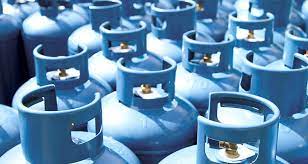Verifying the concentration levels of a calibration gas mixture involves several key steps to ensure accuracy and reliability. First, obtain a Certificate of Analysis (CoA) from the supplier, which provides detailed information about the gas mixture, including the concentration of each component and its traceability to recognized standards such as those from the National Institute of Standards and Technology (NIST).
Ensuring the accuracy of calibration gas mixtures is critical for the reliability of gas detection instruments. Here’s how to verify their concentration levels:
1. Certification from the Supplier
- Certificate of Analysis (CoA): Obtain a Certificate of Analysis from the gas supplier. This document provides detailed information about the gas mixture, including the concentration of each component, the method of preparation, and the traceability to national or international standards.
- Traceability: Ensure that the calibration gas is traceable to a recognized standard, such as those provided by the National Institute of Standards and Technology (NIST).
2. Analytical Verification
- Gas Chromatography (GC): Use gas chromatography to analyze the composition of the gas mixture.
- Fourier Transform Infrared Spectroscopy (FTIR): FTIR can be used to identify and quantify the components of the gas mixture based on their infrared absorption spectra.
- Mass Spectrometry (MS): Mass spectrometry can provide precise measurements of the gas components by analyzing their mass-to-charge ratios.
3. Gravimetric Method
- The gravimetric method involves accurately weighing the amounts of each gas component added to the mixture.
4. Comparison with a Standard
- Primary Standards: Compare the calibration gas mixture with a primary gas standard, which is a highly accurate and certified reference.
- Secondary Standards: If a primary standard is not available, a secondary standard that has been previously calibrated against a primary standard can be used.
5. Repeatability and Consistency Checks
- Multiple Samples: Take multiple samples of the calibration gas mixture and verify their concentration levels independently.
- Long-Term Stability: Conduct stability tests to ensure that the concentration levels remain consistent over time.
6. Documentation and Record-Keeping
- Maintain detailed records of all verification processes, including the methods used, the equipment employed, and the results obtained.
7. Quality Control and Audits
- Implement a quality control system that includes regular audits and verification checks.
- Third-Party Verification: Occasionally, use third-party laboratories to verify the concentration levels of calibration gas mixtures.
8. Regulatory Compliance
- Ensure that the verification processes align with regulatory requirements and industry standards. Compliance with standards such as ISO 17025, ISO 6145, and ISO 6142 is essential for maintaining the credibility and reliability of calibration gas mixtures.





Comments